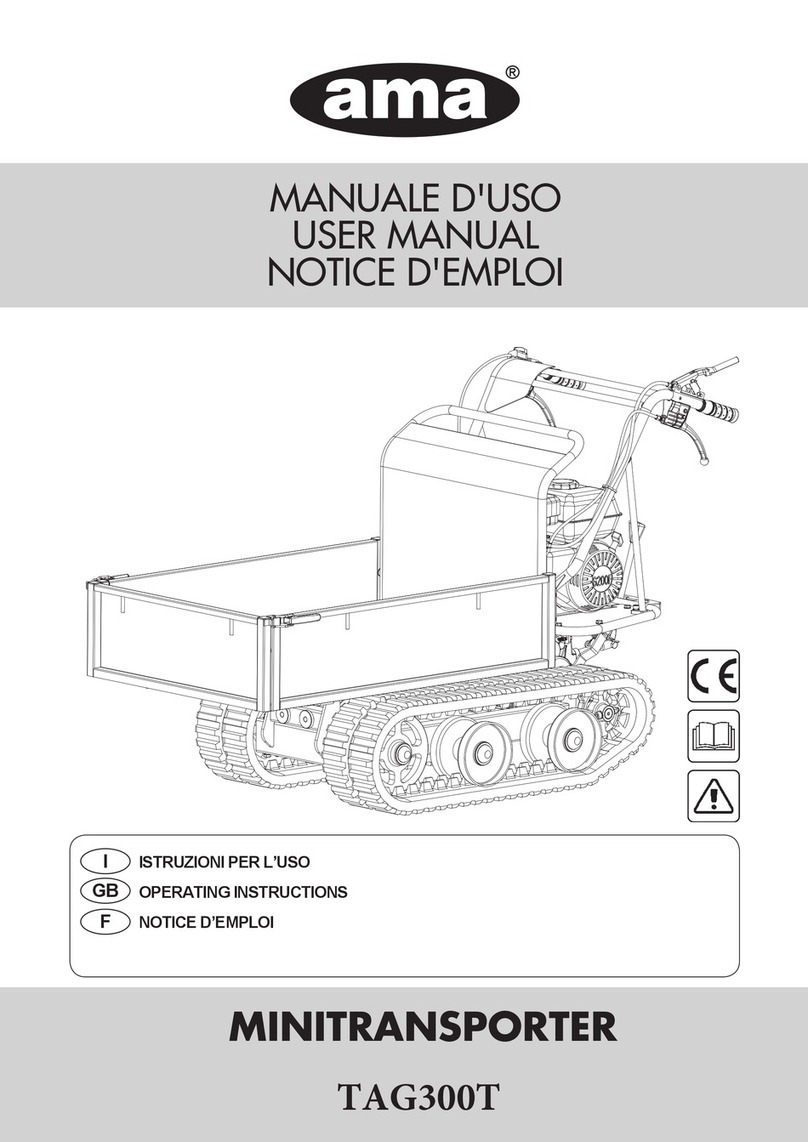
6.5.1 Coupling the 3-point mounting frame 45
6.5.2 Coupling the hydraulic hose lines 45
6.5.3 Coupling the power supply 47
6.5.4 Coupling the universal joint shaft 47
6.5.5 Calculating the permissible payload 48
6.6 Preparing the implement for
operation 48
6.6.1 Manual adjustment of the tine
working depth 48
6.6.2 Adjusting the working height of the
levelling board 50
6.6.3 Adjusting the working depth of the
side guide plates 51
6.6.4 Adjusting the spring tension of the
side guide plates 52
6.6.5 Adjusting the speed of the tines 53
6.6.6 Using the centre line eradicator 54
6.6.7 Adjusting the section end position 55
6.6.8 Adjusting the scraper to the roller 55
6.7 Preparing the machine for road
travel 56
6.7.1 Folding the implement 56
7Using the machine 57
7.1 Unfolding the implement 57
7.2 Using the implement 57
7.3 Checking the set working depth 58
7.4 Turning on the headlands 58
8Eliminating faults 59
9Parking the machine 61
9.1 Unfolding the implement 61
9.2 Lowering the implement 61
9.3 Uncoupling the power supply 62
9.4 Disconnecting the hydraulic
hose lines 62
9.5 Uncoupling the universal joint
shaft 63
9.6 Uncoupling the 3-point mounting
frame 63
10 Repairing the machine 64
10.1 Maintaining the machine 64
10.1.1 Maintenance schedule 64
10.1.2 Checking the top link pin and lower
link pin 65
10.1.3 Checking the hydraulic hose lines 65
10.1.4 Checking the tines 66
10.1.5 Replacing the tines 67
10.1.6 Checking the oil level in the
interchangeable wheel gear 68
10.1.7 Checking the oil level in the centre
gearbox 69
10.1.8 Checking the oil level in the spur
gear trough 70
10.1.9 Replacing the oil in the
interchangeable wheel gear 71
10.1.10 Replacing the oil in the centre
gearbox 71
10.1.11 Ratchet clutch maintenance 73
10.1.12 Universal joint shaft maintenance 73
10.2 Lubricating the implement 74
10.2.1 Overview of lubrication points 75
10.3 Cleaning the implement 76
11 Loading the machine 77
11.1 Lifting the implement 77
11.2 Lashing the implement 78
12 Appendix 79
12.1 Bolt tightening torques 79
12.2 Other applicable documents 80
13 Directories 81
13.1 Glossary 81
13.2 Index 82
MG7512-EN-GB | C.1 | 29.09.2022 | © AMAZONE
II




























